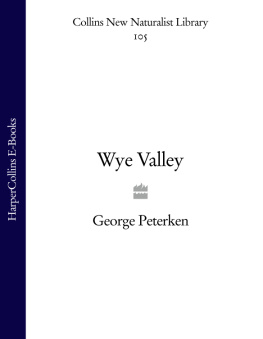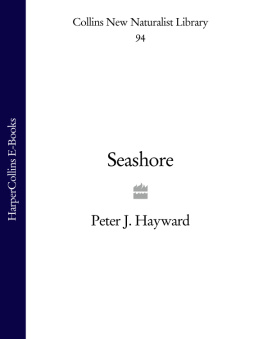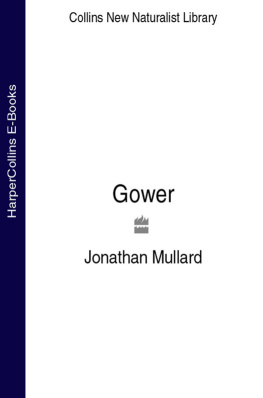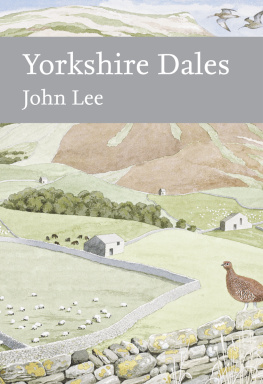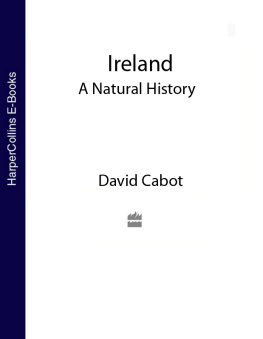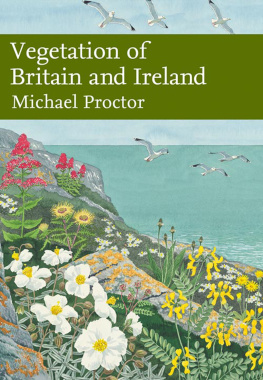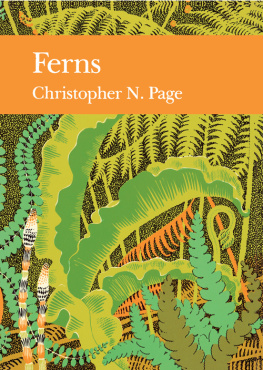Contents
EDITORS
SARAH A. CORBET, S C D
DAVID STREETER, MBE, FIB IOL
JIM FLEGG, OBE, FIH ORT
P ROF . JONATHAN SILVERTOWN
*
The aim of this series is to interest the general
reader in the wildlife of Britain by recapturing
the enquiring spirit of the old naturalists.
The editors believe that the natural pride of
the British public in the native flora and fauna,
to which must be added concern for their
conservation, is best fostered by maintaining
a high standard of accuracy combined with
clarity of exposition in presenting the results
of modern scientific research.
T HIS IS THE FIRST COMPREHENSIVE BOOK to be published about the wildlife of the Brecon Beacons. I have written it because although a large number of people visit the area comparatively few are aware of the flora and fauna that exist in this seemingly wild and inhospitable mountain landscape and its immediate surroundings. I have also taken the opportunity to describe the area because I believe the Beacons, more so than many other landscapes, represent a possibility the possibility for change and the creation of a new countryside. Given the right circumstances, the landscape could be richer in wildlife than it is at present, while still retaining the essence of the mountains. To achieve this successfully there needs to be a wider appreciation of the present and potential distribution of species in the area, and of their interactions with people.
That said, throughout most of the book I have consciously avoided a detailed discussion of the activities of the landowners and conservation bodies, including the National Park Authority, that play a part in the management of the area. (It is heavily managed, although apparently natural in the eyes of the general visitor.) I have instead concentrated on the wildlife, and peoples experience of it. My approach is similar to that of Leslie Harvey, joint author of the first New Naturalist volume on Dartmoor, who wrote I am not reconciled to the view of man as the centre about which the affairs of the world revolve. The account I present of Dartmoor is therefore as objective as I have been able to make it, relating directly to the plants and animals which live there, and to the ways in which human arbitrariness may affect them (Harvey & St Ledger Gordon 1953).
Human arbitrariness is indeed starting to affect the plants and animals found in the Brecon Beacons on a previously unimagined scale, and the warming climate makes the consequences of these actions ever more unpredictable. The need to think about new ways in which the landscape and wildlife of the area might develop over the coming decades is therefore becoming more urgent. Over the past 40 years the mean temperature of Wales has increased by about 1 C overall, leading to a longer and warmer growing season. This does not necessarily mean that it is going to be sunnier, as the very wet and cloudy summer of 2012 showed, warm air holds more moisture than cold air. Whether the second wettest year on record is an indication of future weather conditions remains to be seen, but all these effects will have far-reaching consequences for the landscape of the Brecon Beacons, whether we act or not. Taking positive action, however, may help to mitigate the worst effects of our changing climate and provide space for wildlife to adapt.
I first visited the Brecon Beacons in the late 1970s, when climate change was hardly considered, following in the footsteps of Alfred Watkins, seeking out ancient alignments across the landscape. This brought me inevitably to the Vale of Ewyas and Llanthony Priory, where Watkins had recorded straight tracks across the hillsides. I was struck at once by the almost otherworldly nature of the area. At that time no vapour trails from budget airlines scarred the skies above and the whole area seemed forgotten. The appearance of a red kite above the priory, then an extremely rare sight, added to the feeling of a very different landscape and left me with an impression which subsequent visits and an increased knowledge of the area have failed to erase. That visit was the first of many. Later, while living in Swansea, I explored the upper Swansea Valley and the western end of the Beacons; a very different landscape from lowland and coastal Gower, where I was working at the time. It is, however, countryside that takes time to explore, and few naturalists have a detailed knowledge of the whole area.
Although this is a book written in English about an area of Wales, I have resisted the irritating habit of translating Welsh place names into their English equivalent, except in one or two cases where knowing the meaning of a topographical name adds to an understanding of the subject under discussion. Ban, one of a number of words for mountain or summit is, for instance, the first element of Bannau Brycheiniog (Brecon Beacons) and also occurs in mutated form in Pen y Fan, the highest point of the Beacons.
The large-scale Ordnance Survey maps covering the Brecon Beacons are a useful companion to this book and show many of the sites that I have described. The book is not, however, intended as a field guide and, although a considerable area of the National Park and its surroundings is accessible to the public, the description or mention of any site does not necessarily imply that there is access to it, or that a right of way exists. An account of an area or site, or its appearance on a photograph or map, should not therefore be taken as an invitation to visit.
Finally, writing a book such as this often exposes the personal thoughts of the author, intentionally or unintentionally. It should be noted that the views expressed in these pages are his alone and do not necessarily represent the position of past or current employers.
ACKNOWLEDGEMENTS
While this book was being written and prepared for publication there was a great deal of organisational change in the public sector in Wales, with the Countryside Council for Wales, Environment Agency Wales and Forestry Commission Wales being combined into a single environmental body called Natural Resources Wales. British Waterways also ceased to exist and its functions were taken over by the Canal and River Trust. For simplicity I have, however, elected to refer to the separate organisations as they existed while I was developing the text.
If there is one person I must thank above all for his support of this project it is Graham Motley, Senior Conservation Officer for the Countryside Council for Wales (CCW), who from the beginning saw the value of a book on the area, kindly supplied information, read the draft text, and shared a number of days in the field. Other CCW staff have also been immensely helpful, including Sam Bosanquet, John Wohlgemuth, James Latham, Adrian Fowles and Mike Howe. Gareth Owen, formerly of CCW, suggested how I might approach the geological material, while another previous CCW employee, Ian Morgan, provided a valuable perspective on the wildlife at the eastern end of the Beacons.
Another enthusiastic supporter has been Tim Rich of the National Museum of Wales, who has also walked the mountains with me and ensured that I did not forget the whitebeams and hawkweeds, amongst many other plants. His colleagues Graham Oliver, Ben Rowson and Chris Cleal supplied information on molluscs and fossil plants.
A number of National Park Authority staff have also been extremely helpful, including Alan Bowring, who read the chapter on geology and scenery, Paul Sinnadurai and Gareth Ellis. Steve Smith provided essential information on the management of the Blorenge and his personal project on whinchats and other associated birds.
Joe Daggett of the National Trust kindly briefed me on the Trusts acquisition policy in the Beacons and wildlife sightings on Trust land. James Tinney and Paul Dann of Forestry Commission Wales explained the organisations approach to the area. Mark Robinson of British Waterways sent me details of the Monmouthshire and Brecon Canal records from the 2010 British Waterways wildlife survey.



